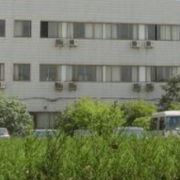托福备考(新托福真题:2013托福阅读考试真题及答案解析(1))
来源:择校网 时间:2024-10-20 05:41:15
一、新托福考试内容都有什么
1、新托福考试内容主要包含以下几点:
2、新托福阅读一共有三篇文章,每篇文章650-750个单词,是新托福考试题型之一,阅读满分为30分,考试时间60分钟。
3、新托福考试听力取消了短对话,由两篇较长的校园情景对话和四篇课堂演讲组成,每段演讲对应6道试题,每个对话对应5道试题,这个部分持续大约50分钟。
4、新托福听力的满分为30分,有34—51题,新托福听力包括学术讲座和长对话问题,有主旨题、功能/目的题、细节题、情景理解题、组织结构题、连接内容题、推论题等题型。
5、这个部分共有6题,持续约20分钟。
6、第一、二题要求考生就某一话题阐述自己的观点。
7、第三、四题要求考生首先在45秒内阅读一段短文,随后短文隐去,播放一段与短文有关的对话或课堂演讲。最后,要求考生根据先前阅读的短文和播放的对话或课堂演讲回答相关问题,考生有30秒钟的准备时间,然后进行60秒钟的回答。
8、第五、六题要求考生听一段校园情景对话或课堂演讲,然后回答相关问题。
9、新托福口语的满分为30分,采用人机对话,主要有非限制性题、二选一题、校园事件题、学术题、学校生活题等题型。
10、要求考生在1小时内完成两篇作文,满分为30分。
11、其中一篇类似于老托福的写作,要求考生在30分钟内就某一话题阐述自己的观点,字数要求为300字以上。
12、另一篇则要求考生首先阅读一篇文章,五分钟以后,文章隐去,播放一段与文章有关的课堂演讲。
13、托福考试可能遇到加试,一般实际考试中,考生往往会在听力或阅读部分碰到加试试题,也有可能阅读、听力两部分同时被加试。加试部分不算分,但是会被作为参考。
14、希望我的回答能帮助到你~望采纳~
二、2020年1月5日托福阅读考试真题答案
1、 2020年的第二次托福考试已经圆满结束了,真题和答案也已经新鲜出炉,大家考得怎么样呢?为大家准备了2020年1月5日托福阅读考试真题答案。
2、 Pueblo Pintado, an outlyingChacoan great house
3、 The Chaco Phenomenon(15年2月1日题)
4、 Distribution of Seaweeds(14年4月19日题)
5、 Temperature Regulation in MarineOrganisms(14年8月16日题;海洋生物中的恒温动物和变温动物,各自的优势)
6、 Essentials of Chinese Art(17年2月25日和18年1月27日题;中国古代艺术,手工业,瓷器和玉器雕刻为例)
7、 El-Nino厄尔尼诺(18年9月15日和19年11月2日题,文章内容类似TPO43-3 El Niño,厄尔尼诺和拉尼娜现象对气候的影响,极端干湿气候)
8、 Industry during the Rome Empire(2018年5月6日和18年9月9日题,讲述了罗马的工业,没有革新revolution,只有规模上的expansion)
9、 The Controversy over the CosmicHypothesis(16年11月12日和17年9月17日题,大爆炸学说和恒定学说。一种说宇宙是爆炸形成的,一种说宇宙整体的组成是恒定不变的)
10、 Nile Floods(18年9月9日和19年10月27日题;尼罗河泛滥)
11、 The Extinction of the Dinosaurs(15年11月15日考题,骨灰级话题了,讨论恐龙灭绝的理论学说,涉及气候改变、火山喷发以及地层中的iridium引出陨石撞击论。文章内容也可以参考TPO8-2 Extinction of the Dinosaurs)
12、 Farming New England in ColonialTimes(15年8月30日,16年3月13日和17年7月15日题,北美早期农业发展)
13、环境问题并非一定源于明显的原因,比如过度放牧
14、 Normal Pacific pattern: Warm poolin the west drives deep atmospheric convection. Local winds cause nutrient-richcold water to upwell along the South American coast.
15、 El Niño conditions: warm water and atmosphericconvection move eastwards. In strong El Niños deeper thermocline off S. Americameans upwelled water is warm and nutrient poor.
三、新托福真题:2013托福阅读考试真题及答案解析(1)
输送血液可以称为生命的礼物。然而,从每年5百万输血病人的大部分情况来看,实际上,输血弊大于利。
It‘s a problem that doctors have been wrestling with for several years, as study after study shows a disturbing spike in heart disease and death in patients receiving transfusions. The trend affects almost every group of critically ill patients— from trauma sufferers in the ER to heart attack victims, patients with anemia and those undergoing chemotherapy. This increase in death and heart disease, doctors say, is unrelated to infectious blood-borne diseases or allergic reactions that often follow transfusions."After you control for sickness and all sorts of things, patients who receive transfusions still have more heart attacks. It makes no sense," says Dr. Jonathan Stamler, a professor of medicine at Duke University Medical Center.
Logically, and medically, patients who need transfusions— those with low blood counts— should benefit immediately from a transfusion of new oxygen-laden red blood cells. Yet many get sicker. Puzzled by the paradox, Stamler and his colleagues decided to look more closely at banked blood— to figure out whether it underwent certain changes that turned it from life-saving in the donor to potentially deadly in the bag.
Their finding, reported this week in the Proceedings of the National Academy of Sciences: nitric oxide(NO). A workhorse of the blood, the gas helps red blood cells ferry oxygen to tissues and props open tiny vessels to allow freer blood flow. It turns out that within hours of leaving the body, levels of nitric oxide in the blood begin to drop, until, by the time donated blood expires after 42 days, the gas is almost nonexistent."The reality is that we are giving blood that cannot deliver oxygen properly," says Stamler, lead author of the study."Many patients who are getting blood are being put at increased risk."
Previous trials have shown that heart disease patients, for example, who receive a blood transfusion to help restore oxygen to deprived tissues, have a 25% chance of having a heart attack and an 8% chance of dying within 30 days; similar patients who do not get transfused have an 8% chance of a cardiac event and a 3% chance of death. Stamler hypothesizes that without NO, red blood cells cannot drill their way into tiny blood vessels; rather, they pile up in narrow passageways, blocking blood flow instead of increasing it and hampering the heart.
Blood transfusions alone may not be directly responsible for these health hazards, but data from other recent studies have been enough to convince physicians to change their so-called transfusion trigger. Doctors have traditionally waited until the patient‘s hematocrit— the proportion of the blood made up of red blood cells— drops below the normal range of 45% to 55% before transfusing. Now, doctors prefer to wait longer, until it falls below 30%."There is still a lot of controversy about the trigger," says Dr. Lynne Uhl, a transfusion specialist at Beth Israel Deaconess Hospital,"but the growing data has reinforced the practice that it‘s okay to let the patient‘s hematocrit drop lower before transfusing."
Wouldn‘t it be more effective if banked blood could simply be improved? Stamler‘s study suggests it can: by replacing nitric oxide in stored blood, Stamler showed that the risk of heart attack and death from transfusion dropped dramatically, at least in mice. And there‘s reason to believe such replenishment could work in human patients as well; already, premature babies born with lung and respiratory problems are placed in NO-rich environments to ensure that their still developing tissues get the oxygen they need to grow properly. For now, the American Red Cross, which oversees 14 million units of banked blood, is waiting for additional study results before changing any of its processing and storage practices.
adv.批评地,用钻研眼光地,精密地,危急地
adj.有传染性的,易传染的,有感染力的
n.似非而是的论点,自相矛盾的话
1. Please translate the blue sentence into Chinese.
"Logically, and medically, patients who need transfusions— those with low blood counts— should benefit immediately from a transfusion of new oxygen-laden red blood cells. Yet many get sicker."
2. What is the main idear of this Article?
3. The article mentioned"The heart disease patients, who receive a blood transfusion to help restore oxygen to deprived tissues, have a 8% chance of having a heart attack and an 25% chance of dying within 30 days" Right? Why?
4. How to effectively improve the banked blood?
1.按道理,从医学上来说,因血球少而需要输血的病人应该很快就从血里的携氧红血球获得益处。而实际上,很多病人病得更严重。
3. False. The correct answer:"Previous trials have shown that heart disease patients, for example, who receive a blood transfusion to help restore oxygen to deprived tissues, have a 25% chance of having a heart attack and an 8% chance of dying within 30 days".
4. By replacing nitric oxide in stored blood.
好了,本文到此结束,如果可以帮助到大家,还望关注本站哦!







